
The Rio Grande River snakes its way from the Colorado Rockies in the North to the Gulf of Mexico in the south. Though the Rio Grande no longer flows continuously (due to damns and irrigation diversions), it is still one of the longest rivers in the United States. The snakes of the Rio Grande River make their homes along its banks. Over 30 kinds of snakes live around the lower Rio Grande, two of which are venomous.
Here, we’ll take a look at ten types of snakes in the Rio Grande. We’ll learn which are deadly and which are harmless. By the end, you’ll be able to identify each of the ten snakes on our list. Here’s a quick overview to get you started:
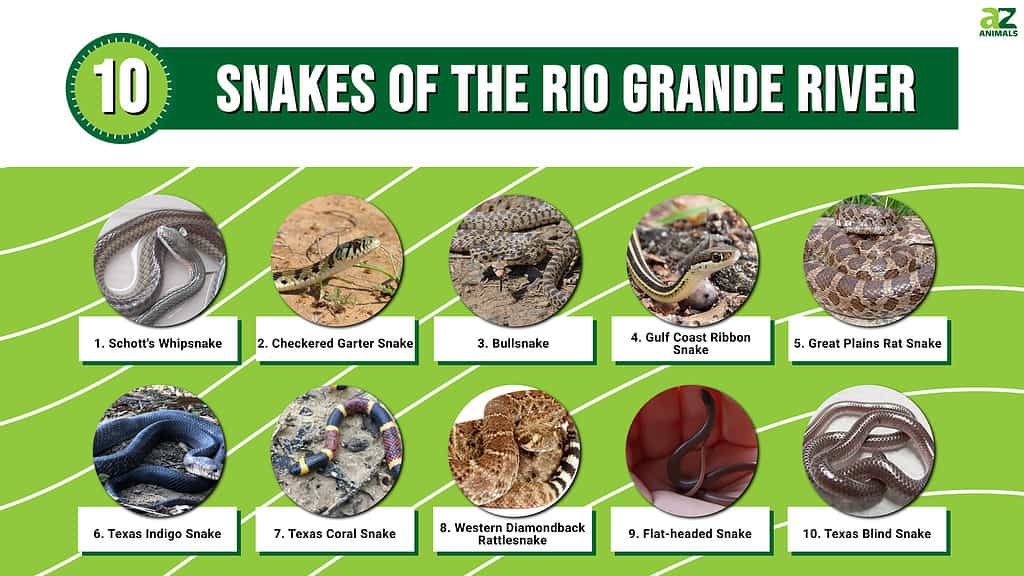
10. Texas Blind Snake
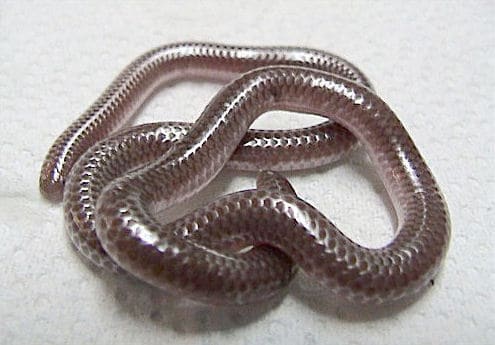
The Texas blind snake looks like an
earthworm
at first sight.
©LA Dawson / CC BY-SA 2.5 – License
Also known as the plains thread snake, the Texas blind snake lives in dry areas near sources of water. These fossorial (burrowing) snakes have a worm-like appearance, with heads that are undifferentiated from their bodies and blind eyes. They grow to a maximum length of about eleven inches and have only a few tiny teeth.
9. Flat-headed Snake
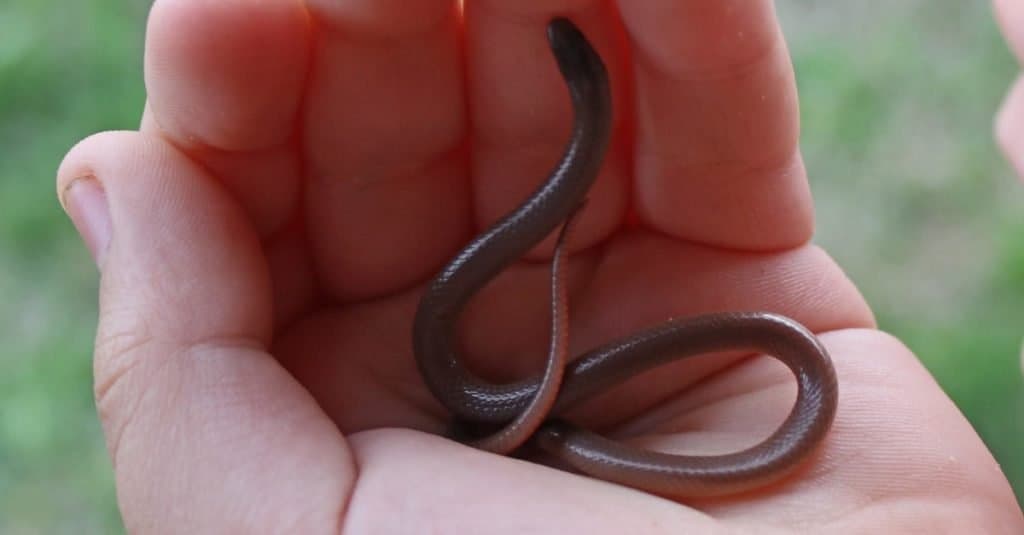
The flat-headed snake has a darker head.
©Creeping Things/Shutterstock.com
Flat-headed snakes grow to a tiny eight inches long. These snakes are brown, without any patterning or blotches, and have pale undersides. They eat tiny creatures, like centipedes and spiders. Often, their heads are darker than their bodies.
8. Western Diamondback Rattlesnake
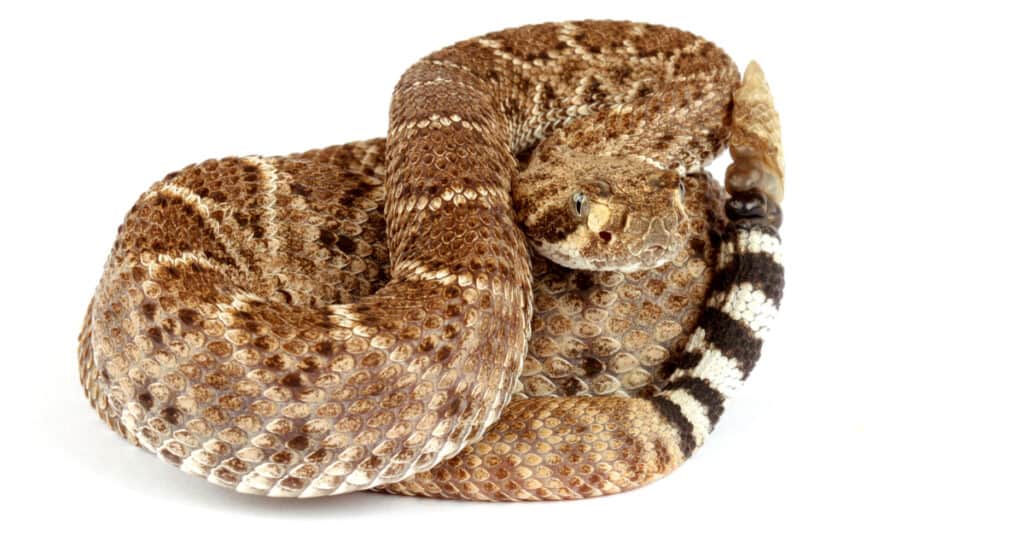
The western diamondback rattlesnake has large fangs and deadly venom.
©Audrey Snider-Bell/Shutterstock.com
Western diamondback rattlesnakes are some of the most famous snakes in North America. They grow up to seven feet long and come equipped with a deadly venom that can lead to death in humans if bites are left untreated. Like all rattlesnakes, they have large fangs and distinct rattles on the tips of their tails. Their backs and sides are dominated by irregular diamond-like patterns of alternating light and dark scales.
7. Texas Coral Snake
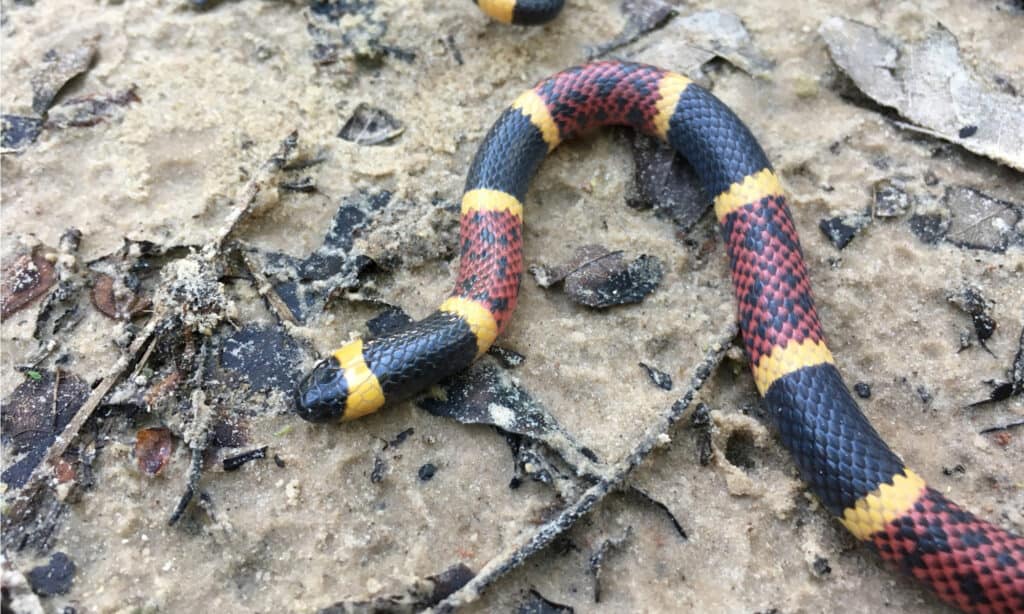
The Texas coral snake can eat other snakes.
©Joe Farah/Shutterstock.com
The Texas coral snakes of the Rio Grande are unique in that they mostly eat other snakes. Texas coral snakes eat primarily earth snakes, smaller coral snakes, and lizards. Their heads are the same width as their bodies, which are marked in alternating bands of red, yellow, and black. These snakes grow up to four feet long and possess a powerful neurotoxic venom. Bites to humans are rare but can turn fatal if left untreated.
6. Texas Indigo Snake
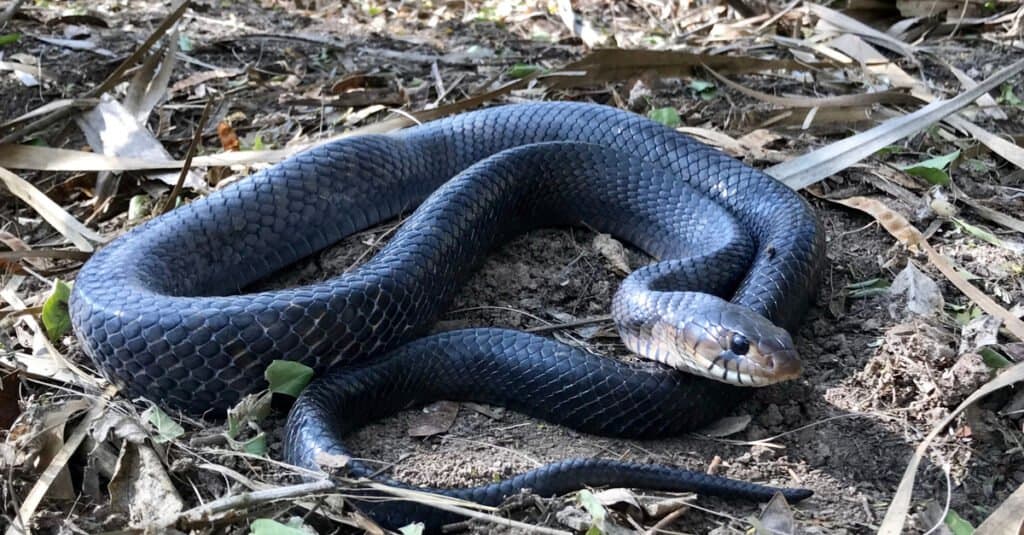
The Texas indigo snake is nonvenomous.
©Joe Farah/Shutterstock.com
Texas indigo snakes are some of the largest snakes of the Rio Grande. These non-venomous reptiles can grow up to eight feet long and have relatively heavy bodies with round pupils. Their undersides are pale tan or pink, while their sides and back are black and glossy. These snakes eat a wide variety of animals, including frogs, snakes, birds, rodents, lizards, turtles, and even rattlesnakes.
5. Great Plains Rat Snake
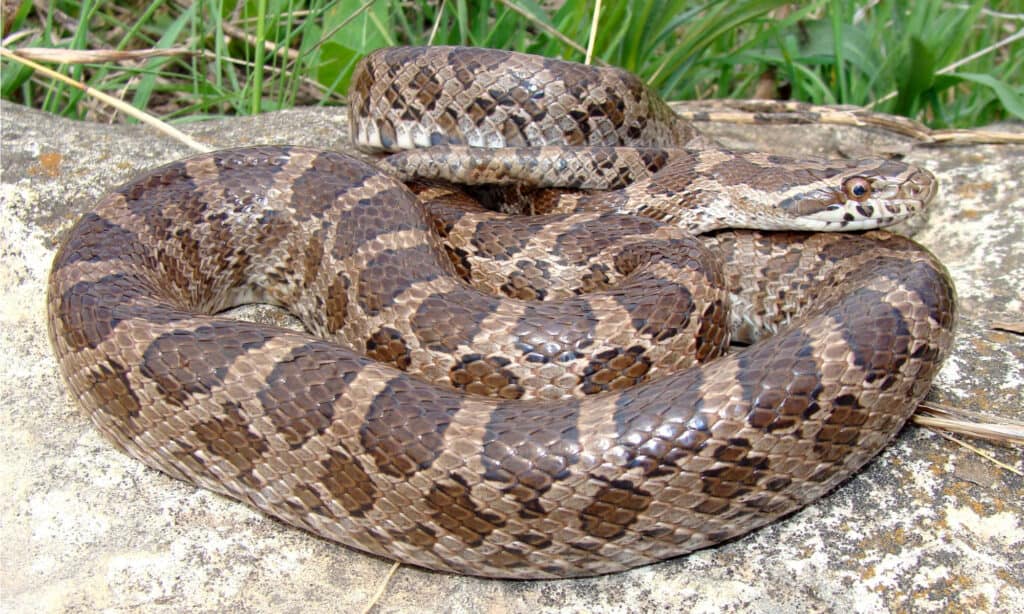
The Great Plains rat snake is tan and light brown.
©Matt Jeppson/Shutterstock.com
These snakes bare a superficial resemblance to the much deadlier rattlesnake. However, they’re non-venomous and pose no threat to humans. They grow up to three feet long and spend their nights hunting for birds, bats, mice, rats, and other rodents. Their heads are no wider than their bodies, and they have round pupils and short snouts. Great Plains rat snakes have large brown blotches on their backs and smaller blotches on their sides. They’re tan and light brown in color.
4. Gulf Coast Ribbon Snake
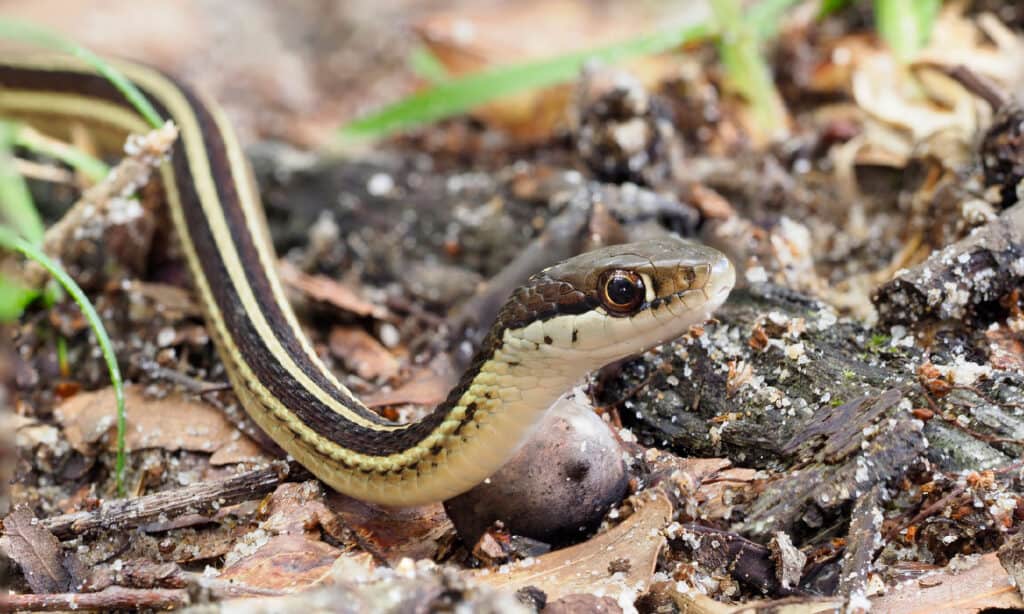
The Gulf Coast ribbon snake eats toads and tadpoles.
©iStock.com/sdbower
Gulf Coast ribbon snakes, also known as garter snakes, are some of the most delicate-looking snakes of the Rio Grande. These slender snakes grow to around 2.5 feet long and have thin bodies. Their eyes are large, round, and red. Gulf Coast ribbon snakes are easy to identify by the long ribbons of alternating light and dark scales that run the length of their bodies. They eat mostly frogs, toads, and salamanders, as well as tadpoles, fish, and lizards. Gulf Coast ribbon snakes pose no threat to humans.
3. Bullsnake
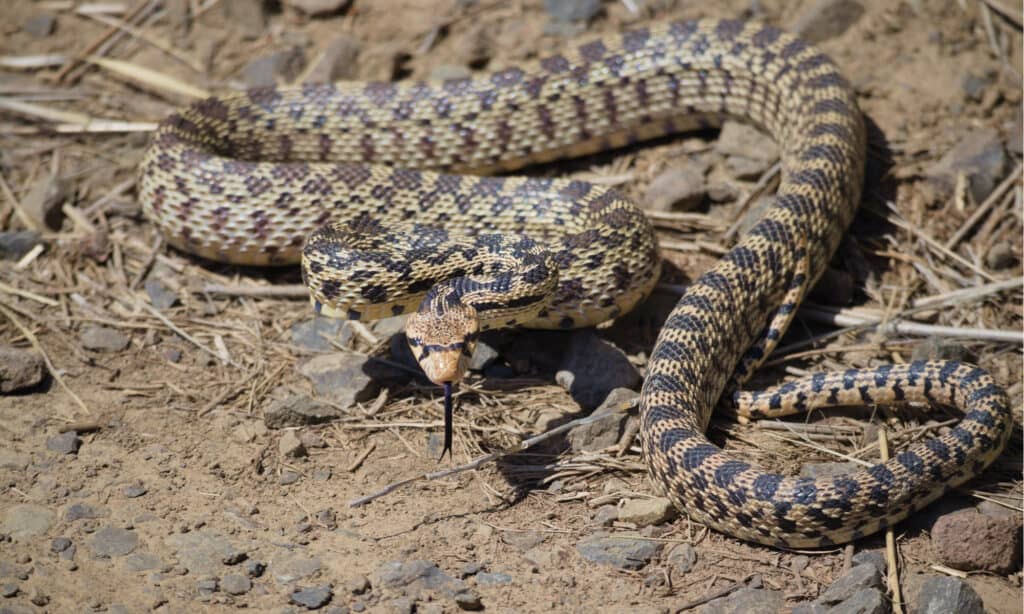
The bullsnake is an adept climber.
©Christopher Joe Brown/Shutterstock.com
A subspecies of gopher snakes, bullsnakes are some of the largest snakes of the Rio Grande. They can grow up to eight feet long and bear a strong superficial resemblance to the much deadlier western diamondback rattlesnake. Bullsnakes might be big, but they lack venom and pose no threat to humans. Instead, these snakes constrict their prey. They eat mostly mammals, like gophers, squirrels, ground squirrels, moles, rats, and mice. They’re also adept climbers and often eat both birds and bird eggs. Bullsnakes have evenly spaced brown blotches over a tan body with pale undersides.
2. Checkered Garter Snake
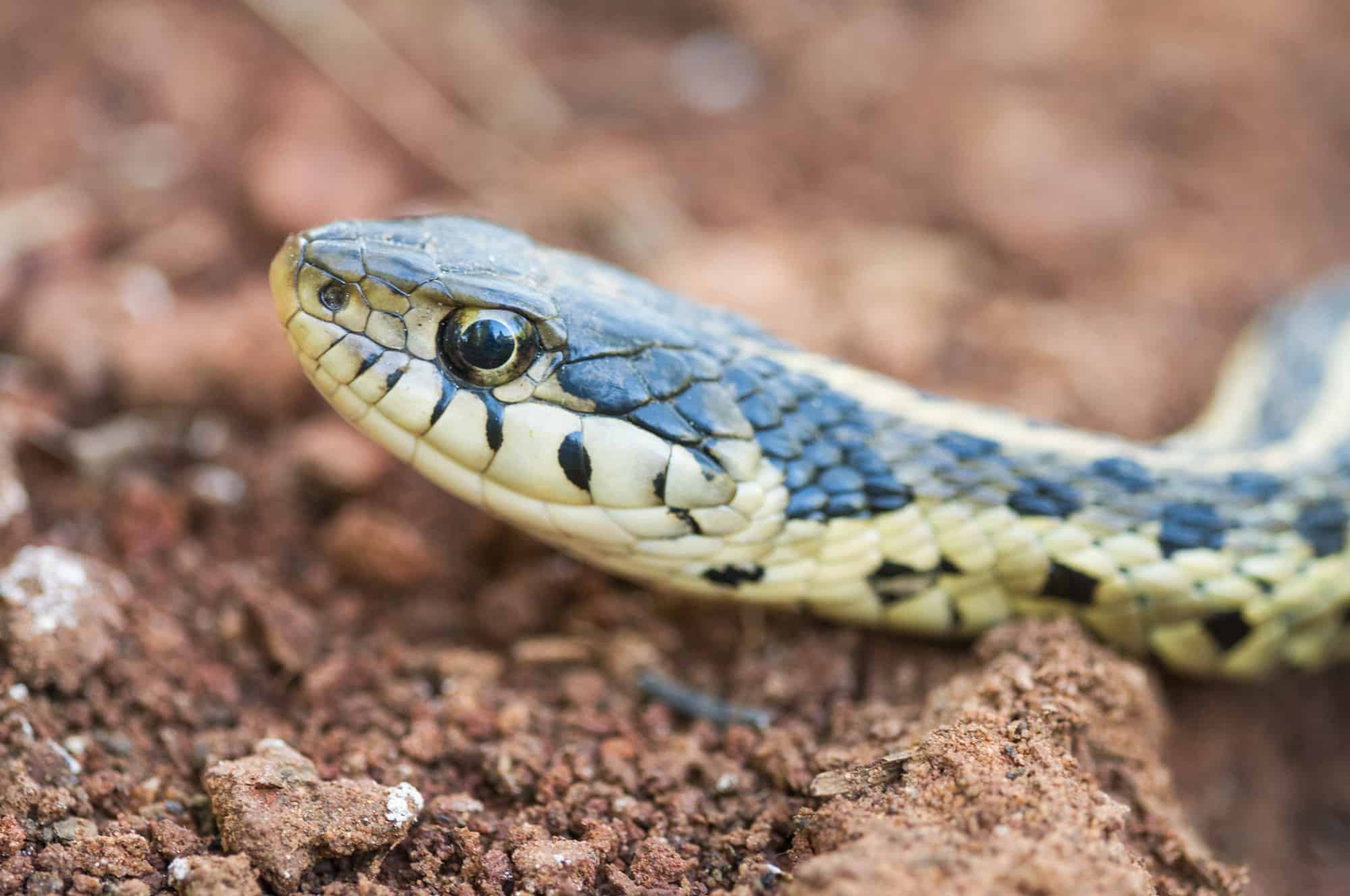
The checkered garter snake poses no threat to humans.
©James Brunner Photography/ via Getty Images
Like the Gulf Coast ribbon snake, the checkered garter snake is small and slender. These snakes grow up to 3.5 feet long and eat mostly earthworms, fish, frogs, and toads. They get their name from the checkerboard pattern on their backs and sides. They also have thin ribbons of light-colored scales running from head to tail. Checkered garter snakes lack venom and pose no threat to humans. However, they will bite in self-defense and have also been known to spray foul-smelling liquid on would-be attackers.
1. Schott’s Whipsnake
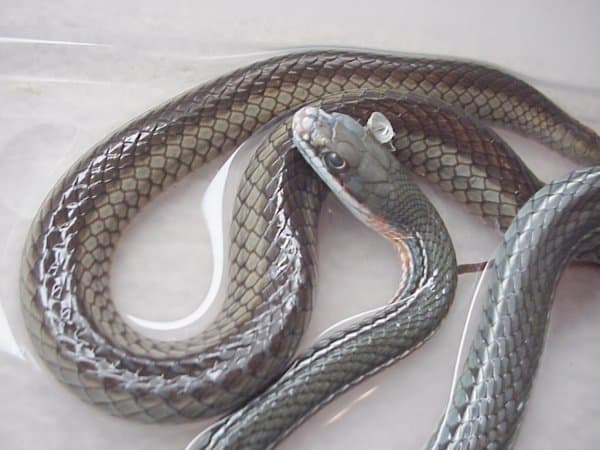
The Schott’s whipsnake is oviparous.
©Dawson at English Wikipedia / CC BY-SA 2.5 – License
These snakes just might be the most unique of all the snakes of the Rio Grande. Schott’s whipsnakes are rarely seen by humans. Similar to garter snakes, they have slender bodies with large heads and round pupils. They’re generally gray, with pale undersides that fade to bright pink near the tail. They’re non-venomous, and grow up to five feet long. Often, they’re seen in trees or open sandy areas, where they hunt for birds, mice, lizards, and smaller snakes.
Summary Of The 10 Snakes Of The Rio Grande
| # | Snake | Venomous? |
| 10 | Texas Blind Snake | Non-venomous – their mouths are too small to give significant bites |
| 9 | Flat-headed Snake | Non-Venomous |
| 8 | Western Diamondback Rattlesnake | Yes – deadly hemotic venom |
| 7 | Texas Coral Snake | Yes – powerful neurotoxic venom |
| 6 | Texas Indigo Snake | Non-venomous |
| 5 | Great Plains Rat Snake | Non-venomous |
| 4 | Gulf Coast Ribbon Snake | Non-venomous |
| 3 | Bullsnake | Non-venomous – they lack venom |
| 2 | Checkered Garter Snake | Non-venomous – they lack venom |
| 1 | Schott’s Whipsnake | Non-venomous |
Other Amphibians Found Near The Rio Grande
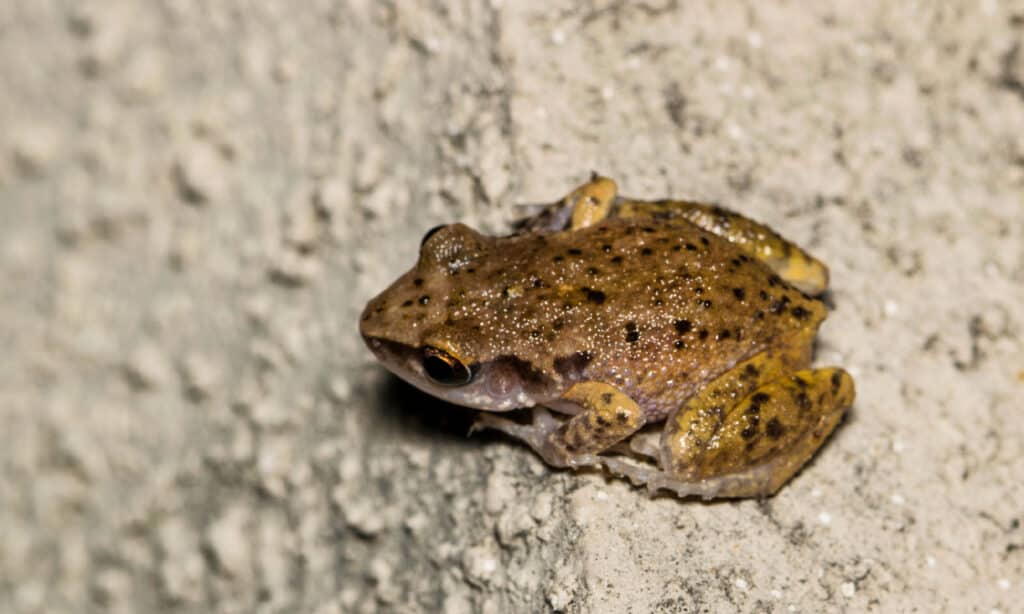
The Rio Grande Chirping Frog is native to the Lower Rio Grande Valley.
©iStock.com/Brett_Hondow
The Rio Grande chirping frog is part of a large genus, one that includes more than 700 members, although there are only 3 species of chirping frogs. This little amphibian only grows to sizes of between 5/8 to one inch and is considered somewhat of an anomaly. Unlike many of its relatives, the Rio Grande chirping frog does not go in the water to breed but rather lays its eggs in moist soil and leaf litter. The males of the species are the ones that make the chirping sound in order to attract the females, which is usually a sharp chirp or group of chirps that is repeated at random.
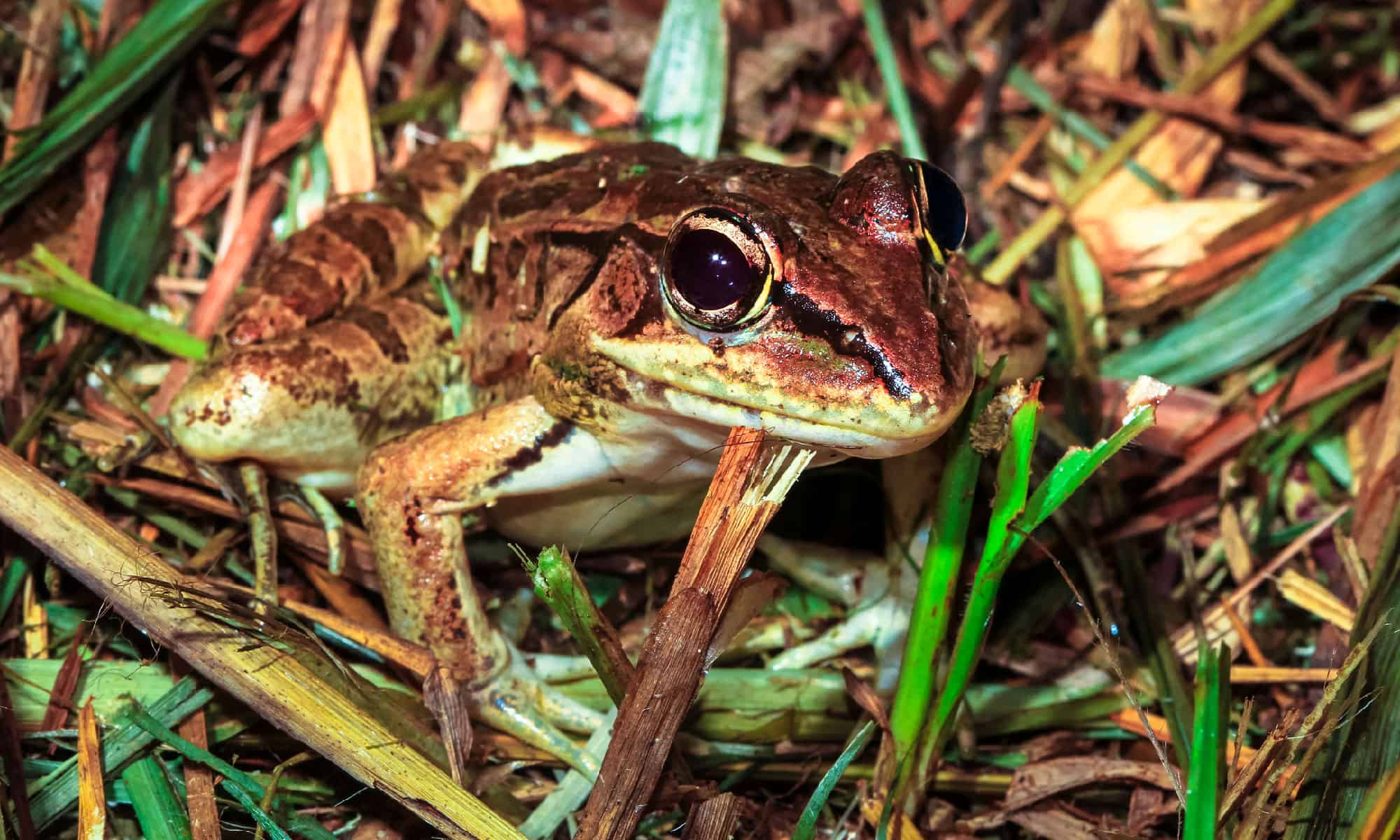
Rio Grande
Leopard
frogs are seldom found away from water.
©iStock.com/Kevin Wells
One of the many aquatic frogs that call this area home is the Rio Grande Leopard Frog. While this amphibian can tolerate dry or cold conditions by burrowing, they prefer to reside near temporary and/or permanent water and can be found near springs, rivers, streams, canals, drainage ditches, savannahs, and woodland areas, to name a few. They range in size from 2.24 to 4.48 inches and have colors varying from green to grey to brown that is covered in spots. These frogs are not poisonous or venomous but there is a possibility for them to transmit salmonella infection.
The photo featured at the top of this post is © Audrey Snider-Bell/Shutterstock.com
Discover the "Monster" Snake 5X Bigger than an Anaconda
Every day A-Z Animals sends out some of the most incredible facts in the world from our free newsletter. Want to discover the 10 most beautiful snakes in the world, a "snake island" where you're never more than 3 feet from danger, or a "monster" snake 5X larger than an anaconda? Then sign up right now and you'll start receiving our daily newsletter absolutely free.
Thank you for reading! Have some feedback for us? Contact the AZ Animals editorial team.






